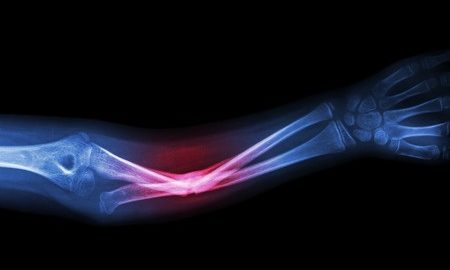Stem Cells: The Secret of Healing Bones

Many people have suffered a broken bone in their lives. Although painful, broken bones heal quite well and the person can return to normal activity. The secret of healing bones lies in stem cells which give this tissue a natural ability to repair and renew.
Bones: A Dynamic Tissue
Most people think of bones as rigid structures that keep our body upright. But bones are actually a dynamic tissue and active organ. A finely tuned balance of physiologic processes ensures that new bone continuously replaces old bone. This ongoing process makes it easy for broken bones to heal. Stem cells play a vital role in the healing of broken bones by first producing cartilage and then new bone to mend the break. The entire process is a delicately balanced sequence of events.
The Role of Blood in Fracture Healing
In the United States, approximately 15 million fractures occur each year. The body’s first response to a broken bone is bleeding. The blood that leaks out of the blood vessels forms a clot called a hematoma. This serves as a temporary plug in the space created by the broken bone. The next step in fracture healing is the inflammation reaction mediated by the body’s immune system. Stem cells from the bone marrow and other surrounding tissues migrate to the site of the fracture as part of this response. Two separate stem cell processes then allow bone healing to be completed – the formation of bone and the formation of cartilage.
Bone and Cartilage Formation After Fractures
New bone formation occurs at the edge of the broken bone. The process is similar to everyday maintenance when new bone replaces old bone. First, a soft cartilage fills the gap between the two broken ends. Again, the process is similar to what occurs in children with growing bones.
Approximately eight days following the injury, cartilage creation peaks and a soft callus forms. This callus is not strong enough to withstand the stresses placed upon bones, however. Therefore, a harder, bone-like callus replaces the soft callus. This bone-like callus is not as strong as normal mature bone. It takes three to four weeks for the new bone to start forming. Complete healing of a fracture can take months to years depending on the site and extent of the injury.
Stem cells and their ability to mature into cartilage and bone is the secret behind the remarkable ability of bones to repair and regenerate. It is for this reason that fractures are able to heal without any traceable scar.
References:
- https://www.medicalnewstoday.com/articles/318961.php


